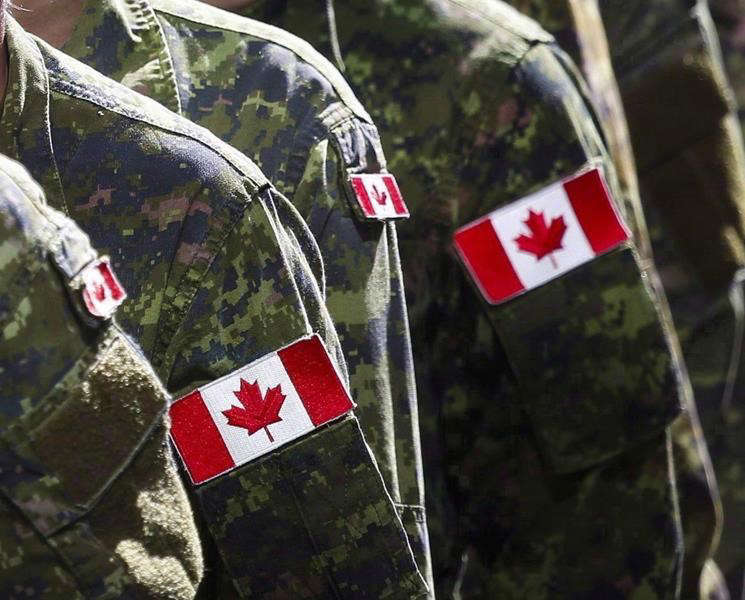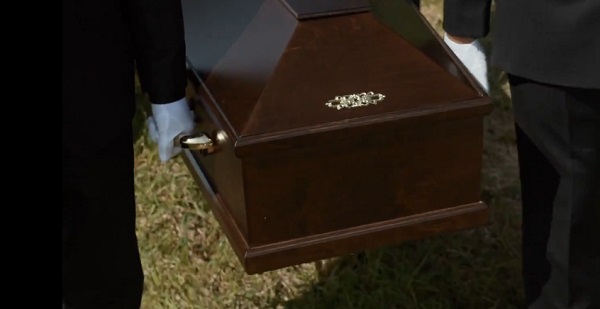armed forces
You wouldn’t believe how complicated distributing public money can get

Veteran Affairs: the Big Picture
While researching posts for The Audit, I’ll often confront massive datasets representing the operations of agencies with which I’m not in the least familiar. Getting to the point where all the raw numbers turn into a useful picture can take considerable effort, but it’s a satisfying process.
But my first attempts to understand Veteran Affairs Canada (VAC) felt a bit different. I wasn’t just looking at funding and costs, but at the frustrations and suffering of people who, to a greater or lesser degree, were harmed through their service to the country. Here, I hope, is part of their story.
The Audit is a reader-supported publication. To receive new posts and support my work, consider becoming a free or paid subscriber.
Veterans Affairs Funding
There are currently more than 460,000 living veterans of the Canadian military. The estimated 2024-25 spending allocation for Veteran Affairs Canada – whose mandate is to serve that population – is around $4.8 billion. The department employs less than four thousand people, which is actually around eight percent fewer than in 2010. Having said that, employment at the distinct Veterans Review and Appeal Board has grown from zero to 161 since 2017.
Besides VAC, the Office of Infrastructure of Canada will spend around $16.5 million on their Veteran Homelessness Program, and Department of National Defence has another $1.6 million budgeted for Community Support for Sexual Misconduct Survivors Program – something for which veterans will also be eligible.
In addition, nearly $2.5 million in grants from various government agencies (including Canada Mortgage and Housing Corporation) was given in 2023 to the Homes for Heroes Foundation, which provides housing and support for at-risk veterans.
Non-government agencies also work to support veterans. In 2023, for instance, the War Amps reported spending $2.7 million on “Service Bureau and Advocacy” and around $700,000 on “Veterans Issues – Special”. The Royal Canadian Legion Dominion Command spent around $1.15 million on veterans services in 2022.
The True Patriot Love Foundation is also a big player in this area, channeling nearly $2.7 million in 2024 to other charities working for veterans. At the same time, more than 30 percent of their own budget came from government sources.
One example of such flow-through funding was the $360,000 given by True Patriot Love to Veterans Transition Network in 2024. In 2023, Veterans Transition Network themselves received another $2.2 million from government along with a total of $1.7 million from other charities.
These kinds of ultra-complex relationships are common in Canada’s charitable sector. The complexity may provide benefits that outsiders can’t easily see. At the same time, knowing whether moving funds through multiple organizations leads to unnecessary inefficiencies and waste is something that would probably require a serious forensic audit.
Veterans Affairs Spending
The largest line items in this year’s VAC spending include $1.6 billion for pain and suffering compensation, $1.34 billion for the Income Replacement Benefit, and $990 million for pensions for disability and death.
In 2023, VAC awarded $41.6 million in external contracts. The largest of those was worth $13.8 million and went to 674725 ONTARIO LTD for “Other Business services not Elsewhere Specified”. 674725 Ontario Ltd. appears to be closely associated with a company called Agilec which, in turn, is a part of Excellence Canada. Here’s how Excellence Canada describes itself:
“Founded in 1992 by Industry Canada as the National Quality Institute (NQI), then rebranded as Excellence Canada in 2011, we are an independent, not-for-profit corporation that is dedicated to advancing organizational performance across Canada.”
In that context, it’s interesting that in 2022, VAC awarded a $159 million contract to a joint venture between WCG International Consultants Ltd. and March of Dimes Canada for “Other Health Services not Specified Elsewhere”.
What makes that interesting? Well, WCG also shows up on an Innovation, Science and Economic Development Canada (ISED) page related to compliance with the Investment Canada Act (ICA). The ICA exists to provide transparency relating to foreign investments in the interest of maintaining a fair and competitive marketplace
This particular page identifies a “U.S.” company called Ancora BidCo Pty Ltd as the new owners of a number of businesses under contract with the federal government. Those businesses include 674725 Ontario Ltd. and WCG International Consultants Ltd.
In fact, Ancora isn’t really a U.S. company at all. They’re actually Australian (as the Pty designation suggests). But their parent company – the private equity firm Madison Dearborn Partners, LLC – indeed operates in Chicago.
There’s no direct evidence to suggest there’s anything dark and nefarious happening here. But it is strange that so many discrete contracts turn out to be awarded to what now amounts to a single foreign for-profit company.
External Contracting Patterns
Has VAC been increasing their reliance on external contracts in recent years? Well, as you can see from this graphic, it’s complicated:
I don’t know what policy changes drove those two huge spikes in 2014 ($933 million) and 2021 ($2.25 billion). But I can tell you which specific vendors are responsible for most of the increase.
In 2014, three contracts worth a total of $803 million went to Medavie Inc for “Other Business services not Elsewhere Specified”. That was 86 percent of the sum of all VAC contracts from that year.
An eye-popping 98 percent of 2021’s external spending went to just six contracts worth $2.2 billion. Medavie Inc received one of those contracts – worth $228 million. But the other five (worth a total of $1.99 billion) were all joint ventures involving WCG International Consultants Ltd.
Lifemark Health Corp. (currently owned by Loblaw) partnered with WCG for three of those contracts, and March of Dimes Canada had the other two dance slots.
What Is Medavie?
Medavie Inc. is the owner of:
- Medavie Blue Cross
- Medavie EMS Inc.
- Medavie health Services New Brunswick Inc.
- Emergency Medical Care Inc.
Between them, those companies provide health insurance, healthcare training, and emergency management services. They also provide public health program administration – which would probably account for the majority of those contract amounts.
What’s not clear to me is why there’s no record of Medavie receiving any federal contracts of any sort since 2021 – despite the fact that the VAC website tells us that they’re still actively engaged in service provision through Partners in Canadian Veterans Rehabilitation Services (PCVRS).
What Is WCG International Consultants Ltd?
As we’ve seen, WCG is now owned by an American private equity firm and is most certainly no longer not-for-profit. Their website tells us that they’re part of the APM Group, which is an Australian company providing “services in early childhood, youth, employment, insurance, justice, veterans, health, disability, and aged care”.
You’re correct to assume the APM Group is more or less synonymous with Ancora BidCo Pty Ltd. More specifically: all of APM’s publicly-traded shares were bought out in the past couple of months on behalf of Madison Dearborn Partners.
Just one more detail: according to WCG’s website, they’re:
“Partners in Canadian Veterans Rehabilitation Services (PCVRS) coordinates and administers the Rehabilitation Services and Vocational Assistance Program on behalf of Veterans Affairs Canada (VAC).”
Curious about PCVRS? Since late 2022, they’ve been tasked with administering all medical, psycho-social and vocational assistance services on behalf of VAC. However, reports suggest that not everyone has been happy with either accessibility or responsiveness under the new system.
None of this is necessarily inappropriate. And if you’re willing to work at it, you’ll be able to use public information sources to uncover a wealth of related relationships and details. But the vast amounts of money involved, along with the operational complexity make abuse possible. Which means external oversight is a good thing.
Besides all that logistical stuff, what really matters is whether veterans themselves are receiving the support and services they deserve. And that’s a question only they can answer.
The Audit is a reader-supported publication. To receive new posts and support my work, consider becoming a free or paid subscriber.
armed forces
Canada At Risk Of Losing Control Of Its Northern Territories

From the Frontier Centre for Public Policy
By Gerry Bowler
Canada has left the North wide open to foreign powers eager to grow their Arctic foothold
Canada is in danger of losing the Arctic because Ottawa has ignored the North for far too long.
The Canadian North makes up 40 per cent of our land mass and includes more than 19,000 islands in the Arctic Archipelago. Yet only about 120,000 people live across this enormous stretch of wilderness. Canada took control of the region in the late 19th century through territorial transfers from the Hudson’s Bay Company and the British Crown, one of the largest land transfers in history.
For decades afterward, the North received little federal attention. The Second World War briefly changed that, prompting construction of the Alcan Highway to Alaska and bringing new airfields and telephone lines.
The Cold War, along with the threat of Soviet bombers crossing the Pole, led to multiple radar lines. Still, Prime Minister St-Laurent admitted in the 1950s that Canadian governments had treated the North “in an almost continuing state of absence of mind.”
John Diefenbaker’s Progressive Conservative administration tried to reverse that neglect. In 1958, he told a Winnipeg audience: “I see a new Canada—a Canada of the North! … We intend to carry out the legislative program of Arctic research, to develop Arctic routes, to develop those vast hidden resources the last few years have revealed.”
Plans for a research and industrial city in Frobisher Bay, new roads and railway lines and wide-ranging surveys were ambitious but ultimately unaffordable. In the years that followed, both Liberal and Conservative governments again set northern development aside.
Foreign interest, however, continued to grow. The Canadian Security Intelligence Service recently reported Russian and Chinese attempts at influence and subversion in our northern territories.
American governments over the past 20 years have shown serious interest in the region’s resources, which include significant oil, gas and mineral deposits, along with control of the Northwest Passage, a shipping route becoming increasingly accessible as Arctic sea ice recedes.
Canada considers those waters national; the United States, the European Union and at times China argue it is an international strait.
For all practical purposes, Canada has what amounts to no meaningful presence north of the tree line, leaving the field open to countries with far more ambition and far better-equipped forces.
Canada is in no position to defend its claims. We have no icebreakers capable of operating through the Arctic winter. We have no submarines that can work under the ice cap. We have no permanent air base for fighter jets.
And to cover two million square kilometres of Arctic territory, we have only 300 troops stationed there. The chance they could detect, let alone repel, a serious intruder is essentially zero. Without these capabilities, Canada cannot properly monitor activity in the region or enforce its sovereignty claims.
In the last federal budget, Ottawa announced a $1-billion Arctic infrastructure fund for new airports, seaports and all-season roads. Our foreign affairs minister has urged NATO to pay more attention to the Arctic, saying it “must be an organization not only that focuses on the eastern flank, but also that looks north.”
These steps are gestures, not strategy. Canadian governments excel at promises but struggle with procurement, and the idea that European allies might fill the gap, considering their weak response to Russia’s assault on Ukraine, is unlikely.
Our northern territory is under threat. We must use it or lose it.
Gerry Bowler is a Canadian historian and a senior fellow of the Frontier Centre for Public Policy.
armed forces
Canadian veteran says she knows at least 20 service members who were offered euthanasia

From LifeSiteNews
Canadian Armed Forces veteran Kelsi Sheren told members of the House of Commons that he has proof of veterans being offered assisted suicide.
Canada’s liberal euthanasia laws have made the practice so commonplace that a Canadian Armed Forces (CAF) veteran has said she knows and has “proof” that no less than 20 of her colleagues were offered unsolicited state-sponsored euthanasia.
Kelsi Sheren, who is a CAF veteran, recently told MPs in the House of Commons veterans affairs committee that “over 20 veterans have confirmed being offered MAID.”
“I have the proof, and I have proof of more,” Sheren told the committee during an October 28 meeting.
Conservative MP Blake Richards asked Sheren if she was willing to provide them with evidence to affirm her allegations.
Sheren noted how the 20 veterans have given written testimonies, or actual audio recordings, of when they were offered what in Canada is known as Medical Assistance in Dying (MAiD).
“We also have other individuals who are too afraid to come forward because Veterans Affairs has threatened their benefits,” she told MPs, adding that some other veterans were even offered non-disclosure agreements along with “payouts if they were to take it.”
Veterans Affairs Canada (VAC) has told the media its “employees have no role or mandate to recommend or raise (MAid). ”
As reported by LifeSiteNews, this is not the first time reports of CAF veterans saying they were offered MAiD.
Indeed, as reported by LifeSiteNews, it was revealed last year that the federal department in charge of helping Canadian veterans appears to have purposefully prevented the existence of a paper after scandalous reports surfaced alleging that caseworkers had recommended euthanasia to suffering service members.
LifeSiteNews recently published a report noting how a Canadian combat veteran and artillery gunner revealed, while speaking on a podcast with Dr. Jordan Peterson, that the drugs used in MAiD essentially waterboard a person to death. Assisted suicide was legalized by the Liberal government of former Prime Minister Justin Trudeau in 2016.
A new EPC report has revealed that Canada has euthanized 90,000 people since 2016.
As reported by LifeSiteNews last week, a Conservative MP’s private member’s bill that, if passed, would ban euthanasia for people with mental illness received the full support of the Euthanasia Prevention Coalition (EPC).
-

 Energy2 days ago
Energy2 days agoExpanding Canadian energy production could help lower global emissions
-

 Business1 day ago
Business1 day agoWill the Port of Churchill ever cease to be a dream?
-

 Great Reset2 days ago
Great Reset2 days agoEXCLUSIVE: The Nova Scotia RCMP Veterans’ Association IS TARGETING VETERANS with Euthanasia
-

 COVID-1923 hours ago
COVID-1923 hours agoFreedom Convoy protestor Evan Blackman convicted at retrial even after original trial judge deemed him a “peacemaker”
-

 Daily Caller23 hours ago
Daily Caller23 hours agoBari Weiss Reportedly Planning To Blow Up Legacy Media Giant
-

 Daily Caller22 hours ago
Daily Caller22 hours agoTrump Gives Zelenskyy Until Thanksgiving To Agree On Peace Deal, With U.S. Weapons And Intel On The Line
-

 Business1 day ago
Business1 day agoThe numbers Canada uses to set policy don’t add up
-

 Business13 hours ago
Business13 hours agoI Was Hired To Root Out Bias At NIH. The Nation’s Health Research Agency Is Still Sick







